The full story of the IBM PC, part two: the DOS empire hits
The real winner was Microsoft, who built an empire on the back of a doubtfully acquired MS-DOS.

Intel 8086, a more expensive, but functionally identical version of the Intel 8088, under whose control the IBM PC will eventually work
In the previous series
In November 1979, Microsoft's frequent partner, Seattle Computer Products, released the Intel 8086 motherboard for the most avid hobby enthusiasts and computer manufacturers who experiment with this new and very powerful CPU. 8086 was closely related to the 8088 chosen by IBM for the PC. The latter was a cheaper version of the first, a hybrid chip at 8-bit / 16-bit, and not purely 16-bit, like the 8086.
IBM leaned toward the less powerful 8088 in particular to control costs, but also to allow it to use certain peripherals that required an 8-bit external data bus, which was 8088. But probably the strongest argument came, as is often the case It happens from the marketing department, not the development. The 8086 chip was so powerful that an IBM PC equipped with it could force customers to abandon larger IBM systems in its favor. IBM wanted to take business away from other PC makers, but not from its units.
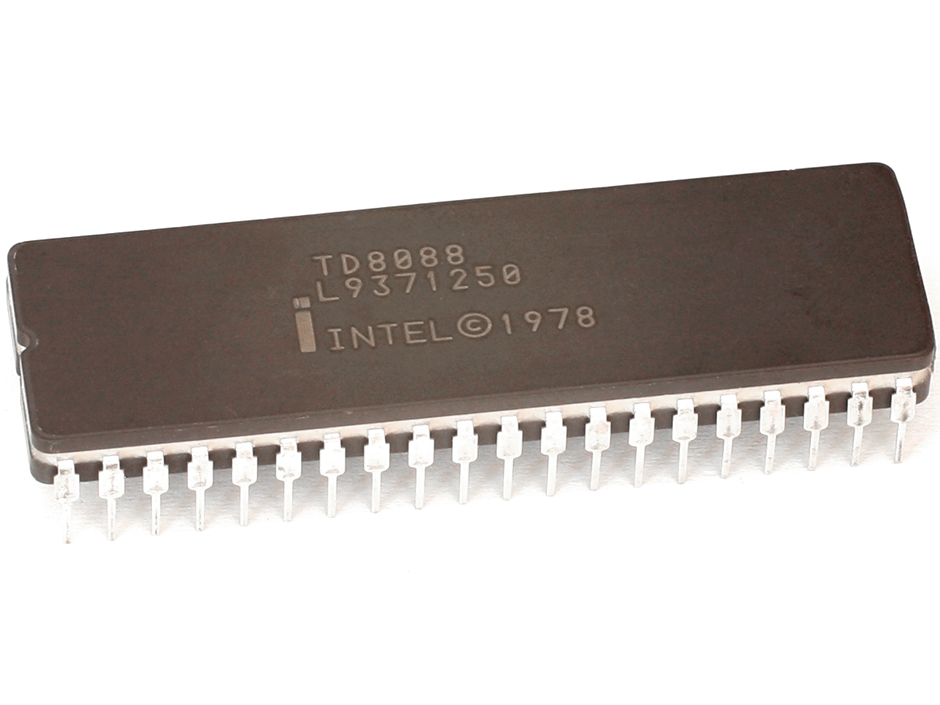
Intel 8088 Low Profile CPU
It is important for us to understand that both chips had the same set of instructions, so the same programs could run on them. Everyone wanted to run CP / M on SCP cards, but CP / M was designed only for the Intel 8080 and Zilog Z80. So the SCP had the same problems that Jack Sams and IBM came across in a few months. Digital Research periodically promised to release a version of CP / M for 8086/8088, but did not. So in April 1980, Tim Paterson of the SCP decided to write his own OS for the 8086/8088. He called it QDOS - a “cheap and angry operating system” [Quick and Dirty Operating System].
Ethics, or lack thereof, in the act of Paterson has been discussed for years. Gary Kildall has stated many times that he stole the CP / M source codes, but this assertion is doubtful. There is no evidence that he had access to the code, which was carefully guarded by Digital, as is common with most companies, both at that time and modern ones.
On the other hand, Paterson admits that he simply took the CP / M manual and just copied all the API calls, one by one. On the third hand, even if it was not very original and creative, his actions were completely legal, even by today's standards. The courts conclude over and over again that the API is not protected by copyright, this can only be done with its specific implementation, so reverse engineering is acceptable. Well, of course, there is still patent law, but we will not get into this swamp.
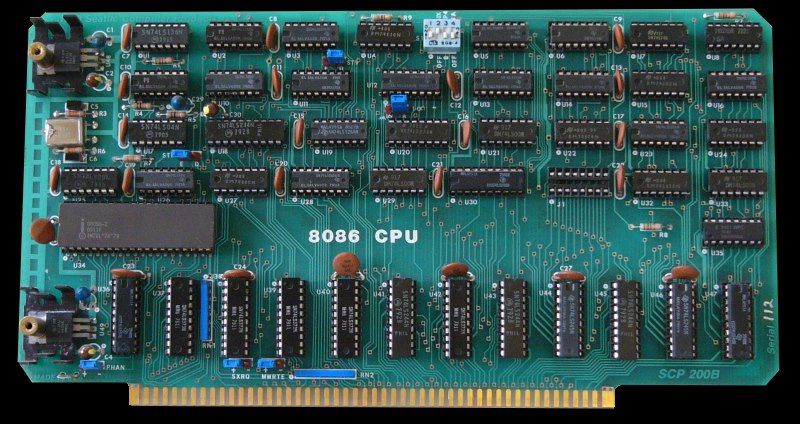
Intel 8086 card manufactured by Seattle Computer Products
Food for thought for open source supporters and opponents of Microsoft: if creating QDOS was unethical, then Linux - for the most part, the reincarnation of Unix standards - would be just as unethical. Paterson argues that he had substantial reasons for copying CP / M: he wanted programmers to be able to port programs from CP / M to QDOS as easily as possible. He also states that under the hood, where possible, he has seriously improved his C version, especially in working with the disk and files.
Meanwhile, Bill Gates was pondering how, damn it, he could create an operating system for IBM at the appointed time. And then Paterson called Microsoft co-founder Paul Allen and told me about QDOS - just in case Microsoft suddenly becomes interested in writing programs for it or internal use. Gates, as a person capable of recognizing a sudden savior, called Sams and asked: “Do you take it yourself, or do you want me to do it?” The answer of Sams to this question over the next decades will cost IBM billions of dollars. “Of course, take it yourself,” he said.
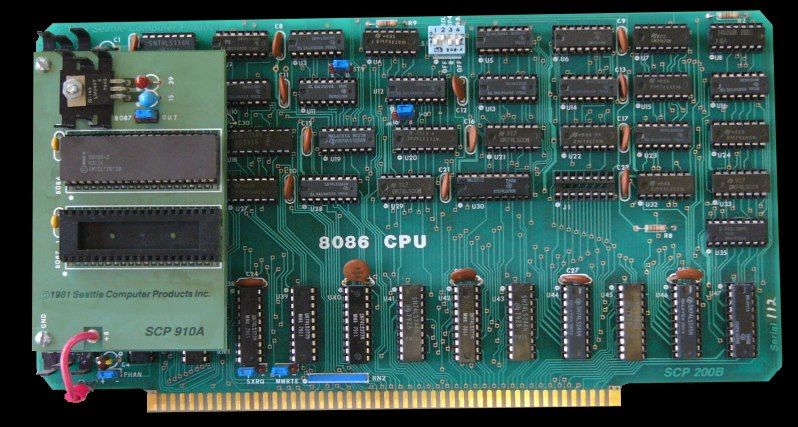
And now - with the addition of the 8087 coprocessor!
Realizing that PC software was very far from his area of expertise, Sams simply gave all the software problems to Microsoft and saw no reason to change course. “We wanted this to be their problem,” he said afterwards. The “problem” of Microsoft in a few years will be a big, huge problem for IBM.
Let there be light!
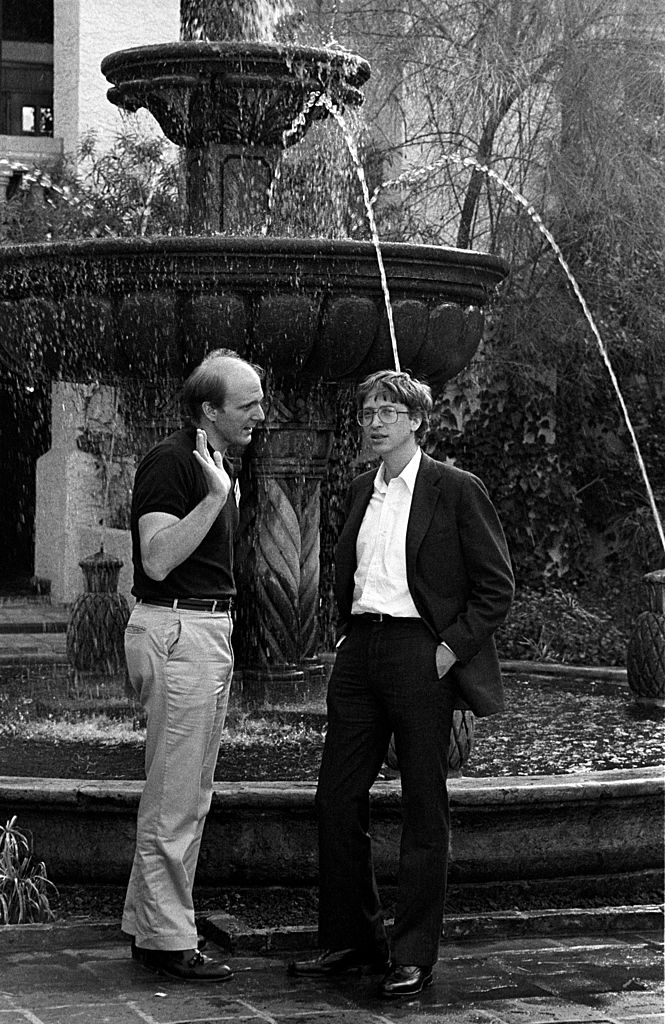
Steve Ballmer and Bill Gates at the PC Forum in 1986.
On September 30, Gates, Steve Ballmer, and Bob O'Rear, the seventh Microsoft employee, flew to Florida to make a final IBM offer. Sams, who wanted to push the problem of software development to someone else, their plan seemed perfect. Microsoft will be responsible for the delivery of OS, four programming languages (BASIC, COBOL, Fortran, Pascal) and a set of other software that should be ready to launch the product (including our old friend, Microsoft Adventure).
Gates insisted on one of the points especially: Microsoft will sell software licenses for IBM, and not just sell the finished product, and will expect royalties from them, payment for each copy. IBM, believing that there was enough opportunity for everyone to make money on it, and that it would not hurt to tie Microsoft’s fate so closely to the IBM PC, she agreed. A huge company, whose conservatism and risk avoidance were legendary, agreed to hand over the fate of one of the largest projects into the hands of a 24-year-old guy. If Microsoft failed, then the IBM PC would be a stillborn product.
On November 6, Microsoft and IBM officially signed a contract, under which Microsoft immediately paid $ 700,000 for the start of transferring all kinds of different software to the new architecture. It's funny that Law and Sams, who played significant roles in the whole project, were transferred to other divisions. Project Chess may have been an independent business unit, but apparently it did not have absolute immunity to the changeable mood of the IBM bureaucracy. The place of the project leader was taken by Don Estridge.
While the software contract was being drafted, Project Chess was not standing still. In the same November, Microsoft received the first two prototypes. IBM, desperately fighting for secrecy, demanded that they be kept in a basement with no windows, locked up, which IBM itself supplied. Microsoft and Project Chess, physically separated as much as possible to still remain in the United States, still created working relationships similar to the working relationships that exist today, when much less depends on geography. They constantly communicated by phone and especially by a special e-mail system, which they established, transmitting messages in both directions using the service for one day, and often traveled to each other - sometimes without warning. This was a particular concern for Microsoft. IBM was in the habit of coming without warning to check if their smart waking security practices were being followed.
Of course, the IBM team also had something to do, but Microsoft really had to hurry. Because of all these negotiations, they, according to Gates, are already “three months behind the schedule” on the day of signing the contract. All several months worked without weekends. Most did not even go away for Christmas.
The first goal was to make the machine work in two modes: BASIC and disk operating system. Microsoft could cope with the first itself, but for the second they depended on Seattle Computer Products. When Microsoft was finishing talks with IBM and starting work, Paterson and SCP continued to develop their own products, improving QDOS from a cheap and angry hack to a usable OS. In the process, for obvious reasons, they renamed it 86-DOS. By the end of the year, they finally had a version suitable for going out into the world.

Bill Gates may not look like a cold-blooded businessman, but this is what he gets from that impression!
Bill Gates comes out of the shadows
Until then, Bill Gates was quiet, acting like a determined, but honest businessman. Now we are starting to see how something of Gates’s legendary evasiveness comes to light. He wanted Microsoft to work under a royalty scheme that gave them a stake in the IBM PC project, whose success was pinned on their hopes. But he did not want to share these fruits with SCP, which did not even suspect the existence of the IBM project, or that their modest OS written by one person was the key to the plans of one of the largest companies in the world. Gates wanted to keep them in the dark, but he needed the 86-DOS yesterday. Consequently, he had to wrest 86-DOS from their hands, not letting them know why he needed it.
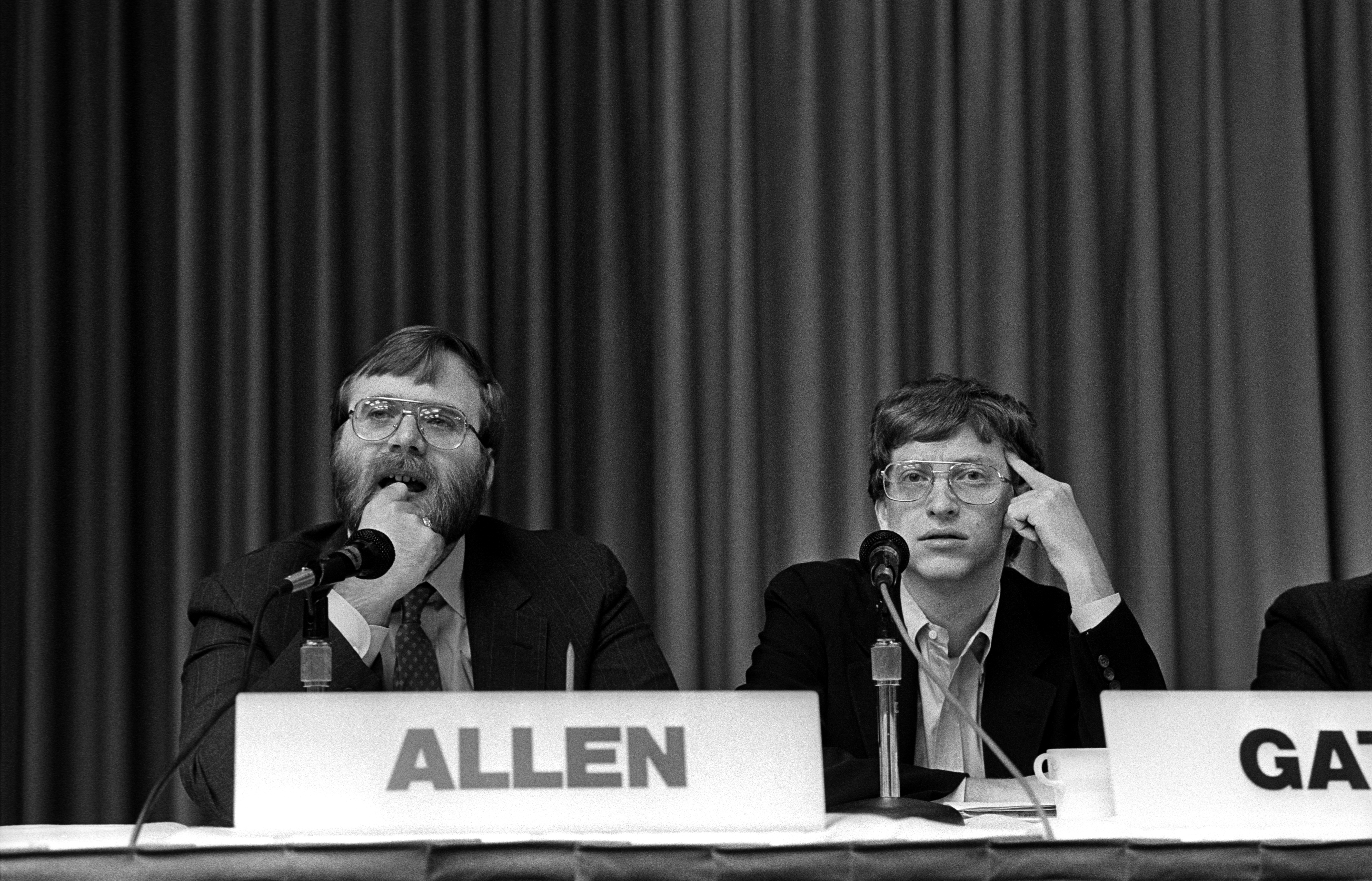
Paul Allen and Bill Gates miss the 1987 PC Forum
Paul Allen made a deal with SCP owner Rod Brock in January, arguing that Microsoft has a whole carriage of customers eager to run 86-DOS. The deal allowed Microsoft to work as an intermediary, or retailer, on these transactions. For each client they sell a license for 86-DOS, they promised to pay SCP $ 10,000, or $ 15,000 if the source code is supplied with the license. They will also pay an SCP of $ 10,000 immediately after the transaction.
For SCP, a small hardware company without Microsoft’s communications and marketing skills, such a deal sounded great — especially because the business didn’t go very well lately. Microsoft showed confidence that it would be able to sell quite a lot of licenses, which would bring easy money to the company for the OS, which Paterson began almost for fun.
One of the clauses hidden in the contract might have raised suspicions: "Nothing in this license agreement can oblige Microsoft to disclose its client to Seattle Computer Products." Later, Brock said: "It seemed strange to us, but we agreed." In fact, of course, Microsoft did not have any carriage of suffering customers. They had only one client, the largest of all: IBM. Microsoft sold only one license under this agreement, which gave it the right to successfully purchase an OS for an IBM PC for a total of $ 25,000.
First boot
In February, Bob O'Rear from Microsoft first managed to load 86-DOS on one of the prototypes:
It was already like a deep night. It was one of the most joyful moments of my life, finally, after all the preparations and work, throwing back and forth, the OS booted in and said that it was ready to accept commands. It was an exciting moment.
IBM soon began to demand various changes to 86-DOS. Microsoft discovered that it was in an awkward position because it had to contact Paterson, who knew 86-DOS better than anyone else with whom they had contracted to consult, and ask him to make changes, not to mention who the requests came from. As a result, they convinced him to leave the SCP and come to their full-time job. “This is IBM!” They told him as soon as he crossed the threshold of his office on the first working day as an employee.

86-DOS (QDOS) running on an emulator
The irony from the point of view of Paterson, who for decades has defended himself against the allegations of pirated copying of CP / M, was that many of the changes requested by IBM brought 86-DOS closer to CP / M. For example, a command prompt showing the current drive, “A:>”, was entered at the request of IBM, and it was a copy of what CP / M did. Paterson says that he was “sick” from this, but naturally, in this project, IBM usually got what it demanded.
IBM planned to announce the IBM PC in August 1981 - according to the initial plan, according to which Project Chess was to be born in exactly one year. They did not want to postpone it, so everyone at Boca Raton, and especially at Microsoft, worked even harder, skipping short deadlines, while the main one remained immovable.
IBM also began making confidential offers to software developers such as VisiCalc and the Easy Writer word processing package in order to add them to the Microsoft line of applications and games. They even agreed that the UCSD Pascal P-System will be available for those who want to run it with 86-DOS or Microsoft BASIC.
Surprisingly, such an extensive project remained secret for a very long time. But finally, in June, InfoWorld published a detailed article describing practically the entire plan in detail, and even mentioned that the OS in the project would not be CP / M, but very similar to it. InfoWorld was wrong only with the date of the announcement, writing that it will occur in June, not in August. An earlier project of Datamaster's personal computer, whose technologies and creators came in handy at Project Chess, made its debut that month. Many decided that the InfoWorld article was about Datamaster, and as a result, the magazine described everything incorrectly. However, people with good connections were already aware of what was happening.
I'll drink your milkshake
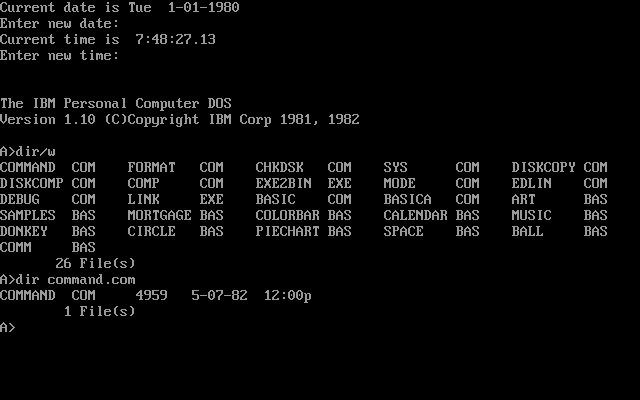
1982 PC-DOS version
And then on July 27, 1981, less than two weeks before the planned announcement, Bill Gates made a deal of the century.
Rod Brock of the SCP was disappointed. The army of licenses for 86-DOS, which he had expected after concluding a deal with Microsoft, did not appear, and now he has lost Paterson, the only person who worked with software in his company, focused mainly on hardware. At that time, it was already obvious who became the only buyer of the 86-DOS license, but the SCP needed money and did not have the ability to support the OS. He tried to sell 86-DOS, in search of someone who wants to engage in supporting the system in exchange for an exclusive license. Gates immediately responded, offered the necessary $ 50,000 for the SCP, but with one condition. He insisted that Microsoft buy not an exclusive license, but the entire system itself. It will then issue an exclusive license to the SCP itself, which turned the whole deal upside down. Brock doubted, but he needed the money, and he did not know what to do with the 86-DOS himself.
He signed the deal, making Microsoft the sole owner of 86-DOS - and it was immediately renamed MS-DOS. Here is another example of making a terrible financial decision, very typical of the early history of microcomputers, when hackers who knew all about bits and bytes, and did not know anything about business, suddenly began to manage companies. Gates, it seemed, had never made such mistakes, and at the same time knew how to use or even induce others to commit them. Such an innocent sheep, like Brock, was easy to send to the slaughter. MS-DOS, acquired for $ 50,000, earned about $ 200 million for Microsoft by 1991. It also became the cornerstone of the company's monopoly, which will dominate business computing by the mid-80s, and in almost all computer areas by the mid-90s -h. This decision more than others contributed to the transformation of Microsoft into today's giant.
But then Microsoft and IBM still had one more legal hitch. While the IBM PC project was becoming an increasingly well-known industry secret, Gary Kildall saw how 86-DOS / MS-DOS works. He was convinced that Paterson stole his OS, somehow got access to the source code, then changed it to run on Intel 8086/8088, cut down the serials and sold it to IBM. He began to threaten the court, and (which probably worried IBM more), raise a howl in the press that could cloud the upcoming announcement.
Kildal and Gates met at dinner to try to negotiate, but nothing happened. “It was one of those meetings where everyone speaks politely to each other first, then everyone yells at each other, then everyone politely again with each other, and then everyone yells again,” recalls John Katsaros, an employee of Digital Research, who attended at the meeting. Therefore, IBM intervened and offered a deal. The company will offer a version of CP / M-86 that is compatible with the 8088, which Digital could not finish as soon as Kildall provided them with its ready-made version. Reassured, Kildall agreed.
The IBM PC, which from the very beginning was conceived as a “machine for everything”, will now have as many as four working possibilities: BASIC, built-in ROM, MS-DOS, CP / M or UCSD Pascal.
August 12, 1981
IBM made the official announcement of the IBM PC on August 12, 1981 at the Waldorf-Astoria Hotel in New York. For a machine with 16 KB of RAM and one floppy disk, the recommended price was $ 1,565. In the complete set price reached $ 6000. At these prices you could get free Microsoft BASIC in ROM. MS-DOS, sold under IBM license as PC-DOS, cost $ 40, and UCSD Pascal - more than $ 500. IBM also announced that at some point CP / M-86 will also be available. In the end, it will take more than six months, until Digital finally gives a working CP / M-86. After that, IBM, as promised, placed it in its catalog at a price of $ 240.
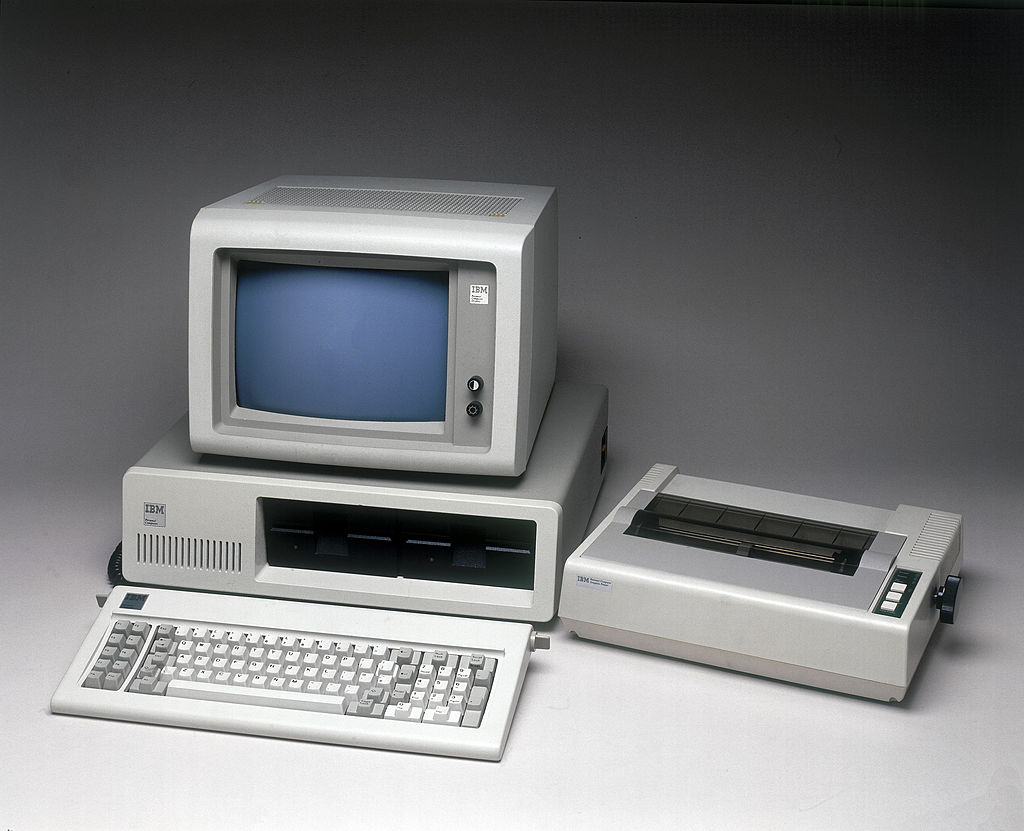
The first version of the IBM PC 5150 with a printer, introduced in August 1981
Kildall, who until his death was convinced that MS-DOS was a pirated copy of CP / M, and sometimes declared that he would be able to prove this with the help of a secret message embedded in the system or an unusual API attribute, he believed that IBM had specially designated CP / M the price is six times higher than for MS-DOS, so that nobody would buy it, and thus fulfill the letter, but not the spirit of the agreement. IBM simply stated that because Digital demanded licensing fees too high, it had no way out. Three of the four options for operating systems, CP / M, Microsoft BASIC and UCSD Pascal, were used so rarely that today few people remember that they were generally available as options. And MS-DOS, of course, went to conquer the world.
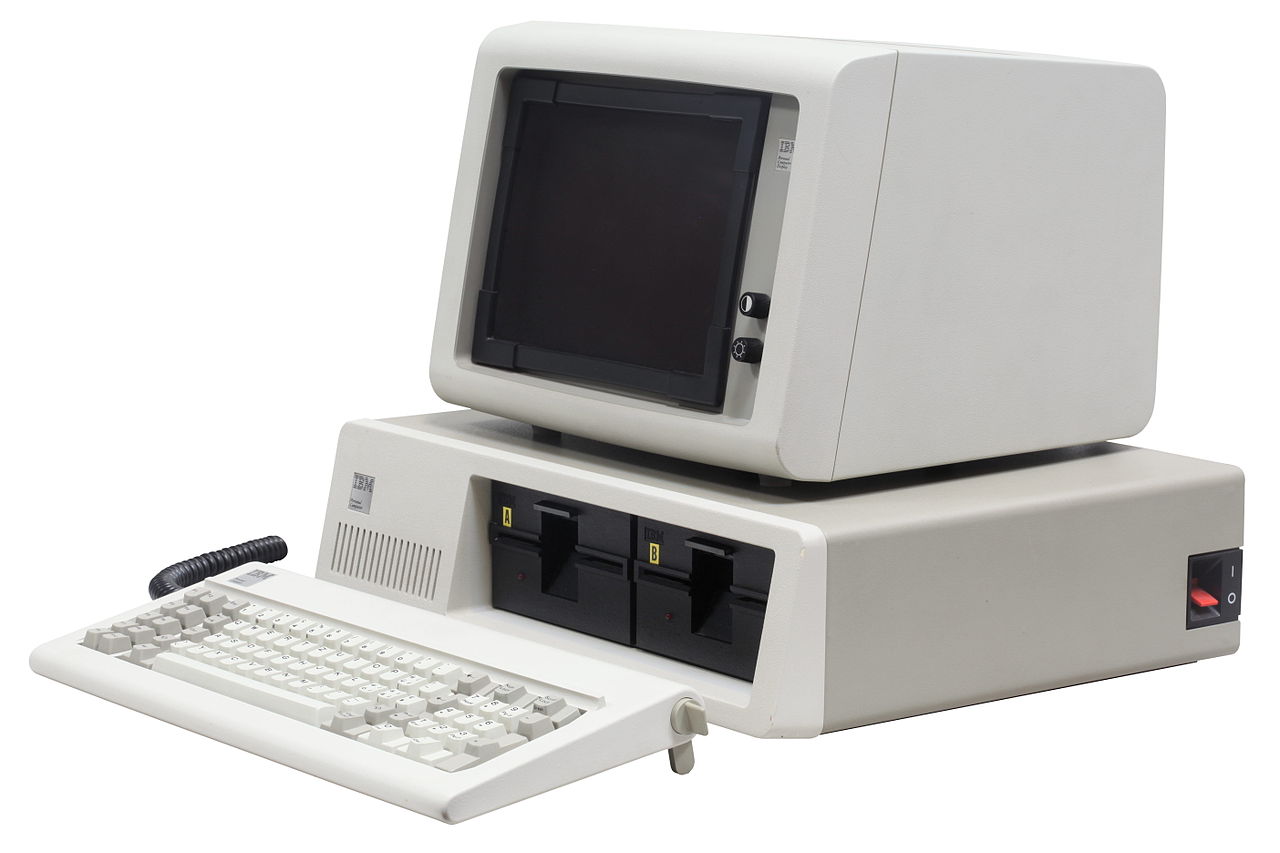
IBM PC 5150
In this case, the iron was gray and dull. Despite the development process unusual for IBM, the final product was not very different from what could be expected from IBM. There was no creative vein in it, but on the click of a keyboard and on a large, robust case with a lot of metal inside, the unit looked quite reliable. And it was not a superficial impression. No matter what they say, the IBM PC has been created for centuries. Perhaps the least well-known innovation was the use of memory with an extra bit of parity that automatically detected errors. It was the first mass microcomputer equipped with such memory protection, which helped to avoid rare but extremely difficult to detect memory errors, which could lead to completely unpredictable results on early PCs. The parity check in RAM is not a function that can arouse hackers, but for a businessman, whose life depends on equipment, this is exactly the function that characterizes IBM. She provided you with a sense of security.

Advertising IBM PC 5150 in print
The lack of creativity in the design confirmed the prejudice of hackers, but for businessmen who do not trust any scruffy start-ups, the appearance of the IBM PC made the microcomputer a serious tool suitable for serious work. Middle-level managers rushed to buy an IBM PC, because no one has ever been fired for buying IBM - even if before this process had not pleased anyone so much. IBM sold 13,500 PCs in the last two months of 1981, and after that, the sales generally went off into space.
When IBM finally entered the game, and since October, the machines began to arrive to customers ahead of schedule, companies that were previously in the market could only guess what it all meant. John Roach from Radio Shack did not guess more than others: “I don’t think this is such a significant event.” Another director of Radio Shack turned out to be only a little less short-sighted: "Of course, we have a new competitor, but IBM did not offer anything that could blow up the industry."
Apple, who already understood more than anyone in public relations, gave a full-page advertising article in the Wall Street Journal that said: “Welcome, IBM. True. ”Like many other examples of Apple’s ads, it was a masterpiece of rhetoric, which seemed to sound polite, and at the same time made it clear that a) IBM was late and b) Apple views them as just other competitors.
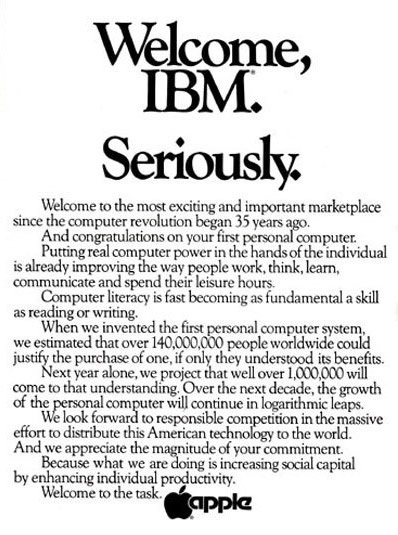
Apple's WSJ ad:
Welcome to the most interesting and important market since the beginning of the computer revolution that started 35 years ago.
Congratulations on your first personal computer.
To give all the possibilities of a computer at the disposal of individuals - this means improving the quality of how people live, work, study, communicate and spend their free time.
When we invented the first personal computing system, we thought that approximately 140 million people would be able to justify its purchase if they understood its advantages.
We assumed that only next year a million people will come to this understanding. And in the next decade, the growth of personal computers will be logarithmic.
We are waiting for responsible competition in a difficult attempt to spread this American technology around the world. We appreciate the complexity of your commitments.
Because we are engaged in increasing social capital through improving the productivity of individuals.
Welcome to this task.
Epilogue

The IBM PC 5150 was so successful that it spawned many variations
Many years later, it will become clear that the appearance of the IBM PC was the third greatest milestone in PC history, following the first microcomputer sets that appeared in 1975, and the trinity (Apple II, PET, TRS-80), released in 1977. It also marked the end the first era of the history of Microsoft, the slovenly but respected supplier of BASIC, other programming languages and application programs (in that order). Against the background of the launch of the IBM PC, Microsoft quickly cut off ties with more hacker communities, among which it grew to firmly attach its car to the IBM and MS-DOS business computing train. Many aesthetic, technical and legal problems were waiting for them on this way - but besides this, hundreds of billions of dollars were also waiting there.
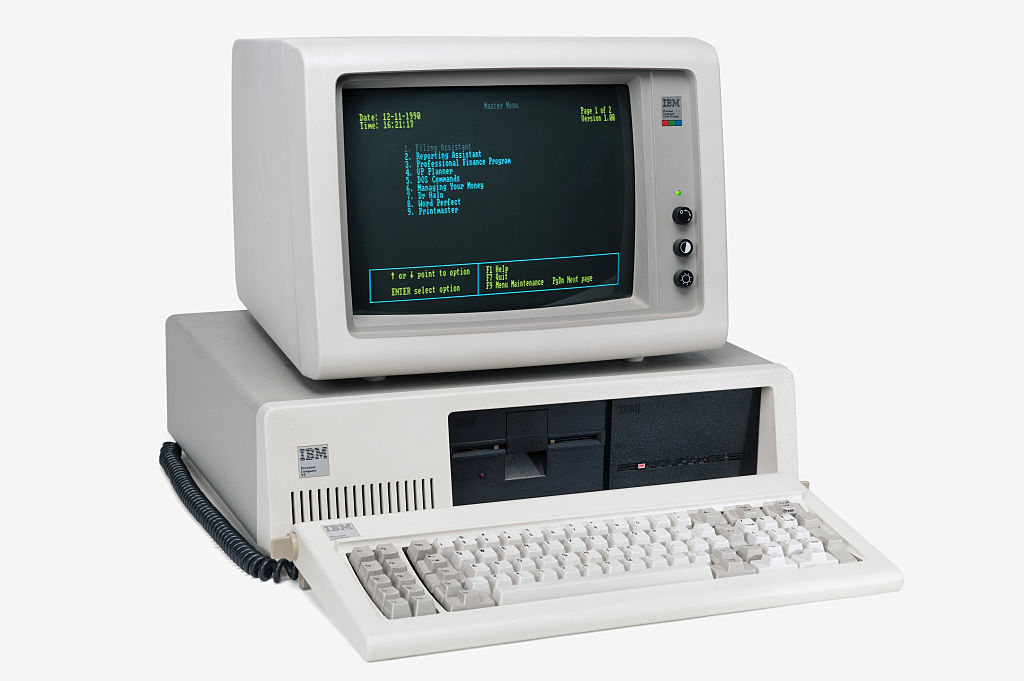
Starting in IBM PC XT in 1983, with built-in hard disk
Other players in this story have a more difficult fate. Seattle Computer Products for several years tried to stay afloat, but gave up in 1985. Rod Brock still had one very valuable thing. You remember that Brock sold 86-DOS to Microsoft, but instead received an exclusive license.When his company closed, he decided to make some money by selling this license to the buyer, who would offer the highest price. Microsoft, having seen the possibility that suddenly Radio Shack, Compaq or even IBM could sell machines with MS-DOS installed and not pay her anything for it, retroactively established that this license was sold without the right to transfer. This resulted in a difficult legal battle, one of the first to wait for Microsoft on its way. As a result, Brock did not sell his license, but received a check in the amount of $ 925,000, which was quite enough for him.
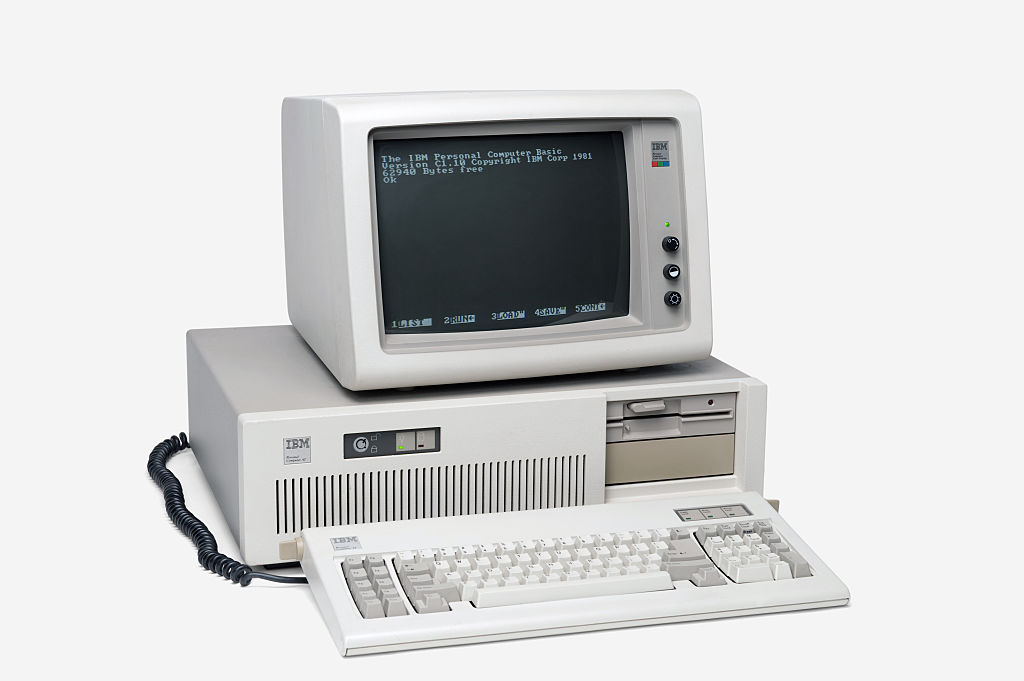
Then there was the IBM PC AT in 1984, with the new CPU 80286
Naturally, the biggest loser in this story was Gary Kildall. However, this is a matter of interpretation and point of view. Digital Research lost its first place in the world of business computing, but for years it continued to remain viable and fairly well-earned software and niche operating system vendor. Kildall became famous as one of the host of Computer Chronicles shows on PBS, a bit disheveled, polite, and interesting for viewers who belonged to the breed of nerds. As a result, in 1991, Digital bought Novell, which allowed Kildall to retire as a millionaire. So for a loser, he is pretty good cumshot. Kildall was always more interested in technology than business, and he could not become Bill Gates. Gates may have won, but Kildall was probably much more interested in working.

IBM PCjr, , 1984
Although the IBM PC marked the end of an era, and the beginning of a new one, these eras are better seen in hindsight than at the time of their existence. Immediately after its launch, little has changed for happy users of Apple, Commodore, Atari and Radio Shack. IBM in the development of the PC imagined the machine as suitable for anything, including competition with the companies mentioned - hence BASIC in ROM, an option with support for tapes, and even the requirement of the possibility of connecting it to a TV. IBM even negotiated sales opportunities through the popular Sears network. And yet the car was quite expensive, even in the simplest versions, and it lacked the basics of casual software (mostly games) and such adherents as its competitors had. Also its features in graphics and sound were unattractive (and surprisingly, they were generally)especially compared to the new Commodore 64, released in 1982.
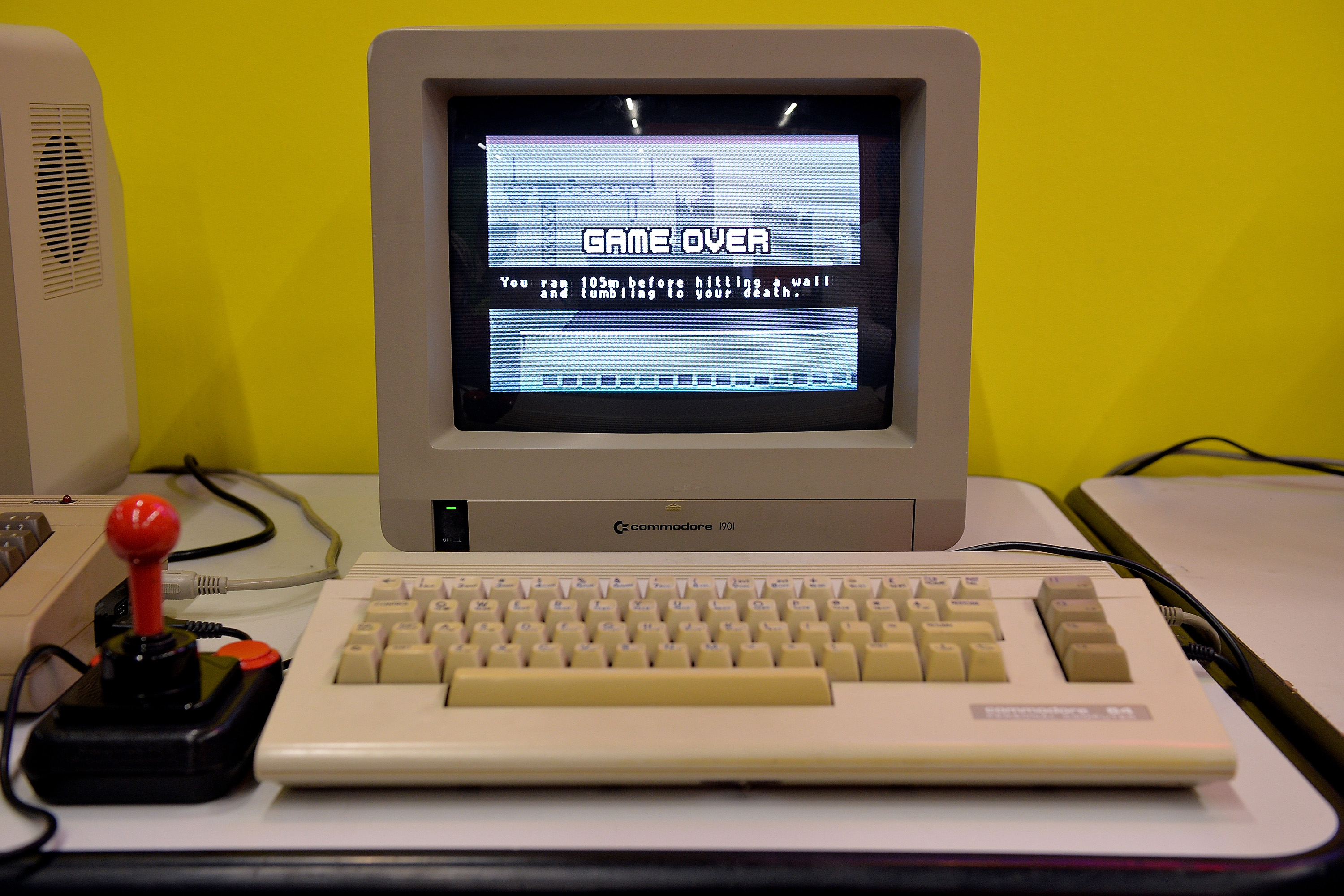
Commodore 64 kept the IBM PC from conquering the home computer market. Some time
So, although the business community surprisingly quickly reached out to IBM and MS-DOS, the world of home computing, hobbyists, and educational computers remained quite fragmented for many years. As a result, of course, MS-DOS will win - but it will take more than a decade, instead of several months, which will allow the most lively and interesting computer cultures to grow and flourish.
All Articles